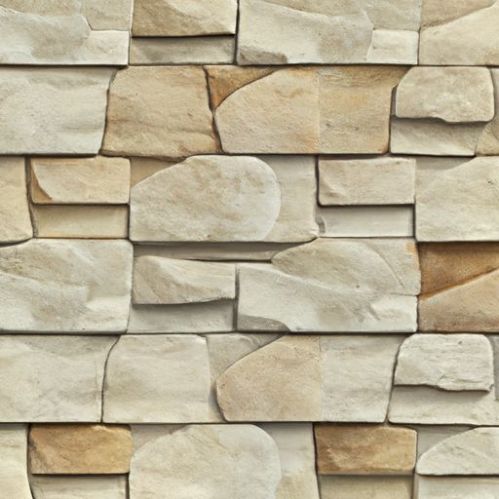Table of Contents
Avantages de l’utilisation de galets roulés pour le revêtement des murs intérieurs
Comment choisir et installer des carreaux de pierre beige pour le revêtement mural extérieur
Une fois le mur préparé, vous pouvez commencer à installer les carreaux de pierre beige. Commencez par le bas du mur et remontez en utilisant une truelle pour appliquer du mortier ou de l’adhésif au dos de chaque carreau. Appuyez fermement les carreaux sur le mur, en vous assurant qu’ils sont de niveau et uniformément espacés. Utilisez des entretoises pour maintenir des espaces constants entre les carreaux pour une finition professionnelle.
Pendant que vous continuez à installer les carreaux de pierre beige, soyez attentif aux motifs ou aux dessins que vous souhaitez créer. Vous pouvez mélanger et assortir différentes nuances de carreaux de pierre calcaire ou de galets roulés pour ajouter un intérêt visuel et de la dimension au mur. Assurez-vous de prendre du recul périodiquement pour évaluer vos progrès et procéder aux ajustements nécessaires.
Une fois tous les carreaux de pierre beige installés, laissez sécher complètement le mortier ou la colle avant de jointoyer les carreaux. Choisissez une couleur de coulis qui complète les carreaux de pierre beige et comble les espaces entre eux. Utilisez une taloche à coulis pour appliquer le coulis uniformément, puis essuyez tout excédent avec une éponge humide. Laissez sécher le coulis avant de sceller les carreaux pour les protéger des taches et de la décoloration.
En conclusion, les carreaux de pierre beiges sont une option polyvalente et élégante pour le revêtement des murs extérieurs. En choisissant le bon type de pierre, la taille et la forme des carreaux, et en suivant les techniques d’installation appropriées, vous pouvez créer un revêtement mural magnifique et durable qui améliore l’apparence générale de votre maison ou de votre bâtiment. Que vous optiez pour du carrelage en pierre calcaire ou des galets roulés, le carrelage en pierre beige saura marquer les esprits.
How to Choose and Install Beige Stone Tiles for Exterior Wall Cladding
When it comes to enhancing the aesthetic appeal of your home or building, wall cladding is a popular choice. Not only does it add a touch of elegance and sophistication, but it also provides protection against the elements. Beige stone tiles are a versatile option for exterior wall cladding, as they can complement a variety of architectural styles and design preferences. In this article, we will discuss how to choose and install beige stone tiles for exterior wall cladding.
One of the first things to consider when choosing beige stone tiles for exterior wall cladding is the type of stone. Limestone is a popular choice due to its durability and natural Beauty. Limestone tiles come in a range of shades, from light beige to darker hues, allowing you to find the perfect match for your design vision. Tumbled pebble stone is another option that can add a unique texture and visual interest to your exterior walls.
Before purchasing beige stone tiles, it is important to consider the size and shape of the tiles. Larger tiles can create a more modern and seamless look, while smaller tiles can add a rustic charm. Be sure to measure the area you plan to cover with wall cladding to determine the quantity of tiles needed. It is also a good idea to order extra tiles to account for any breakage or mistakes during installation.
When it comes to installing beige stone tiles for exterior wall cladding, proper preparation is key. Start by cleaning the surface of the wall to remove any dirt, debris, or old paint. If the wall is uneven, consider applying a layer of Mortar or adhesive to create a smooth surface for the tiles. It is also important to waterproof the wall to protect the tiles from moisture and ensure their longevity.

Once the wall is prepped, you can begin installing the beige stone tiles. Start at the bottom of the wall and work your way up, using a trowel to apply mortar or adhesive to the back of each tile. Press the tiles firmly onto the wall, making sure they are level and evenly spaced. Use spacers to maintain consistent gaps between the tiles for a professional finish.
As you continue to install the beige stone tiles, be mindful of any patterns or designs you want to create. You can mix and match different shades of limestone tiles or tumbled pebble stones to add visual interest and dimension to the wall. Be sure to step back periodically to assess your progress and make any necessary adjustments.
Once all the beige stone tiles are installed, allow the mortar or adhesive to dry completely before grouting the tiles. Choose a grout color that complements the beige stone tiles and fills in the gaps between them. Use a grout float to apply the grout evenly, then wipe away any excess with a damp Sponge. Allow the grout to dry before sealing the tiles to protect them from stains and discoloration.
In conclusion, beige stone tiles are a versatile and stylish option for exterior wall cladding. By choosing the right type of stone, size, and shape of tiles, and following proper installation techniques, you can create a beautiful and durable wall cladding that enhances the overall look of your home or building. Whether you opt for limestone tiles or tumbled pebble stones, beige stone tiles are sure to make a lasting impression.
